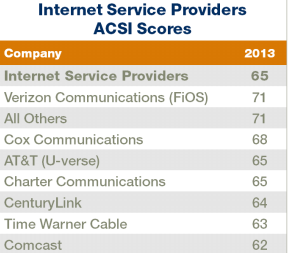Level 3 accuses major ISPs of forcing internet traffic into the slow lane

Ever see your internet connection slow down to a snail's crawl? Did you assume it was just your Internet Service Provider (ISP) having to deal with too much traffic? Maybe it was, maybe it wasn't. Or, maybe — according to Level 3 Communications, a Tier 1 ISP that provides internet services for many business and consumer ISPs in North America, Latin America, and Europe — your ISP is deliberately not giving you the best possible service.

Mark Taylor, Level 3's VP of Content and Media recently wrote that there are six "large Broadband consumer networks with a dominant or exclusive market share in their local market" that refuse to upgrade their service to deal with their users' traffic needs. The result is Michael Mooney, Level 3's general counsel for regulatory policy, explained, that "These ISPs break the internet by refusing to increase the size of their networks."
Latest review
Level 3 believes that at least six major ISPs, which they refuse to name at this time, are determined to break net neutrality for their own profit. In a reply to a note on the blog, Taylor refused to name the guilty ISPs. "At this time, we have decided not to specifically identify the peers with significant congestion; however, we can say they are large incumbent broadband providers in the US and Europe." He didn't explain why Level 3 is not revealing their names.
Taylor did add, however, that " the companies with the congested peering interconnects also happen to rank dead last in customer satisfaction across all industries in the US [According to the 2013 American Customer Satisfaction Index ACSI] Not only dead last, but by a massive statistical margin of almost three standard deviations." ACSI's bottom six companies were, from worst to relatively best: Comcast, Time-Warner, CenturyLink, Charter, AT&T, and Cox.
He also explained that Level 3 is still providing Internet services to these misbehaving ISPs "because if we terminated the connectivity we would damage the customer experience (for our customers and for the broadband provider’s customers) even more. We are not willing to do that."
Another issue, which Taylor doesn't mention, is that Level 3 provides Netflix's Content Delivery Network (CDN) services. Netflix is, of course, the internet's single largest consumer of network bandwidth.
Netflix CEO Reed Hastings wrote in March 2014 that by allowing last-mile ISPs, such as those Level 3 is accusing of not playing fair, these "big ISPs can demand potentially escalating fees for the interconnection required to deliver high-quality service. The big ISPs can make these demands — driving up costs and prices for everyone else — because of their market position. For any given US household, there is often only one or two choices for getting high-speed internet access and that’s unlikely to change." Netflix and Level 3 could be singing from the same hymnal.
That said, this is far from the first time Level 3 has accused ISPs of deliberately not meeting their customers' needs. In December 2010, James Crowe, then Level 3's CEO, told the FCC that Comcast was breaking network neutrality. Crowe wrote, "The question, quite simply, is whether Comcast and other residential broadband Internet service providers should be allowed to use their dominant control over access to their subscribers' eyes and ears in order to coerce payments from broadband backbone and independent content providers."
This fundamental battle over net neutrality and who in the end determines the quality and cost of internet service is continuing today. And, from where Level 3 is sitting, it's the end-users who are getting the short end of the stick.
Related Stories: